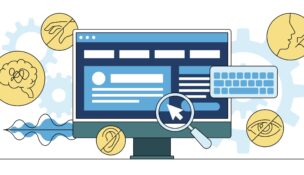The Remote Work Burnout is Real: Here’s What You Need to Know
Discover the nuances of the remote work phenomenon, focusing on its impact on mental health and productivity, and the strategies to mitigate those threats.
Valerie Chua //January 24, 2024//


The Remote Work Burnout is Real: Here’s What You Need to Know
Discover the nuances of the remote work phenomenon, focusing on its impact on mental health and productivity, and the strategies to mitigate those threats.
Valerie Chua //January 24, 2024//
In the wake of the pandemic, remote work swiftly became the norm for countless businesses worldwide. Over a third of employees now work, at least partially, remotely. The shift is heralded for its safety, convenience and liberation from the dread of an employee’s daily commute. However, it also bears a downside that looms large: burnout.
The boundaries between professional and personal life blur easier in a remote work situation, leaving many grappling with a constant work-life merging. The tools that enhance connectivity often become instruments of perpetual availability, intensifying the pressure to perform constantly.
A staggering 86% of employees who work from home full-time experience this phenomenon. The absence of physical detachment from the workspace can erode the much-needed respite, leading to a palpable sense of burnout.
Discover the nuances of this remote work phenomenon, focusing on its impact on mental health and productivity and the strategies to mitigate this looming threat. If you’re a business seeking to improve employees’ work ethic or an employee who’s struggling with the daily digital grind, read on to learn more about the issue.
READ: Overcoming Career Burnout — 3 Strategies for Leadership Longevity
Why does remote work exacerbate burnout?
Remote work blurs work-life boundaries, increases screen time and your constant “availability” that digital tools amplify. The lack of physical separation from the workspace leads to prolonged working hours, difficulty disconnecting and heightened pressure to always be accessible, fostering an unceasing work culture.
The absence of a clear distinction between professional and personal spaces renders remote workers susceptible to a relentless work-life blend. The digital environment also becomes a vortex where the delineation between clocking out and leisure dissipates.
From meetings to communication and general work, additional screen time converges on the same device, leading to cognitive overload and a perpetual state of “being online.” This exacerbates the pressure to perform and devastating any time for much-needed respite.
The setup drives these compounded factors, contributing to an environment where the risk of burnout intensifies.
READ: Adapting to the New Norm — Post-Pandemic Work Culture and the Future of Remote Work
How to mitigate remote work burnout
Amidst the rising concern of remote work-induced burnout, employers and employees alike hold the key to fostering a healthier work environment in this digital setup.
There’s a collective responsibility for well-being in a remote work landscape. Cooperation between management and employees is necessary to achieve and maintain the benefits of remote work without sacrificing health and productivity.
For employers
Here’s how you can support your employees past their remote onboarding to maximize their efficacy without sacrificing their well-being.
1. Respect boundaries: Encourage a culture that respects off-hours. Refrain from sending non-urgent emails or messages outside of agreed-upon work hours.
2. Set clear expectations: Define work hours and communication protocols explicitly to prevent the assumption of constant availability. Also, compensate for any overtime or extra work your employee renders.
3. Promote breaks and time-off: Encourage regular breaks and vacations to allow employees to recharge until they’re ready to handle further tasks.
4. Provide support: Offer resources such as mental health services or counseling to support your employees and maintain their health. A support system can do wonders for your employees’ health and morale.
READ: Managing a Remote Work Team with Communication and Ease
For employees
Your participation bolsters the collaborative effort to make work-life balance possible. Here are steps you can take to mitigate the risk of burnout.
1. Define work boundaries: Set clear boundaries between work and personal time, adhering to designated work hours to avoid overworking. However, don’t take advantage of boundary-setting to get away with underworking.
2. Create a dedicated workspace: Establish a separate area for work, if possible, to set a clear divide between professional and personal spaces. Remove distractors in the working environment and remove work-related items in your leisure spaces.
3. Take regular breaks: Incorporate short breaks or step away from screens for a while to let your eyes and mental state rejuvenate throughout the day. If you can, leave your phone behind so you can completely disconnect and recover quickly.
4. Communicate needs: Openly communicate with your employers about workload or stress levels to avoid potential burnout triggers. An open dialogue informs you of what to expect and what your employers can expect from you, tempering both parties’ expectations.
Out with Burnout
Remote work has undoubtedly changed the way many businesses operate. From cost-cutting to added family time, a setup like this allows for better flexibility with one’s time.
However, despite these benefits, it also comes with many drawbacks as employers and employees like Laike need help to find balance in handling each other’s newfound freedom.
Burnout’s detrimental effects ripple widely, fostering increased employee turnover and diminishing quality of life and work outputs. Mitigating burnout demands a collective commitment from employers and employees alike to nurture a culture that prevents its grip rather than perpetuates it.


























